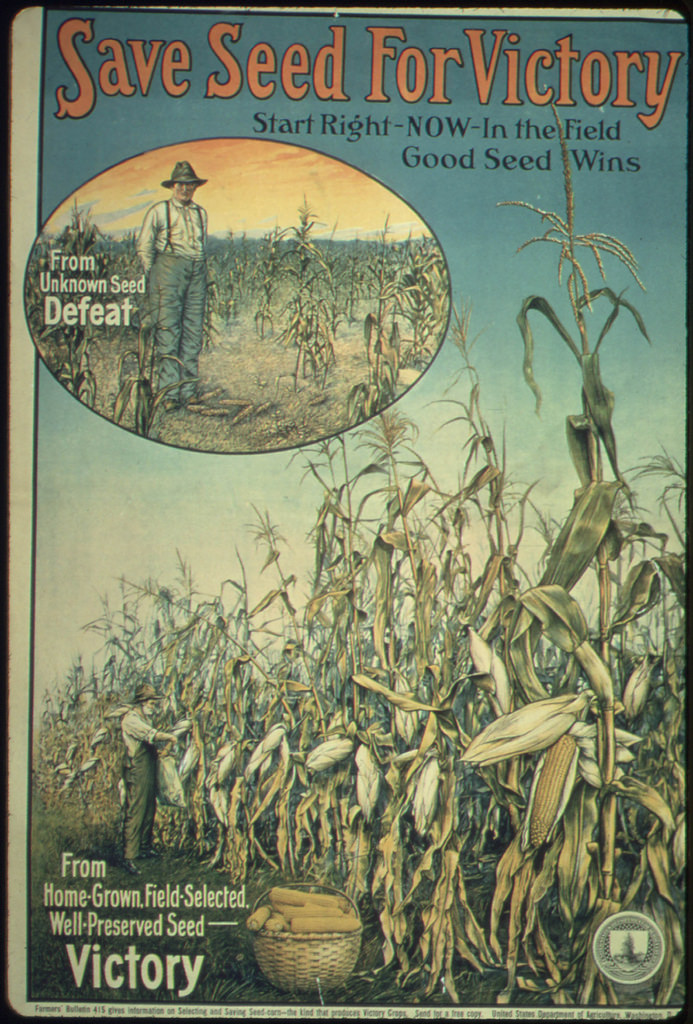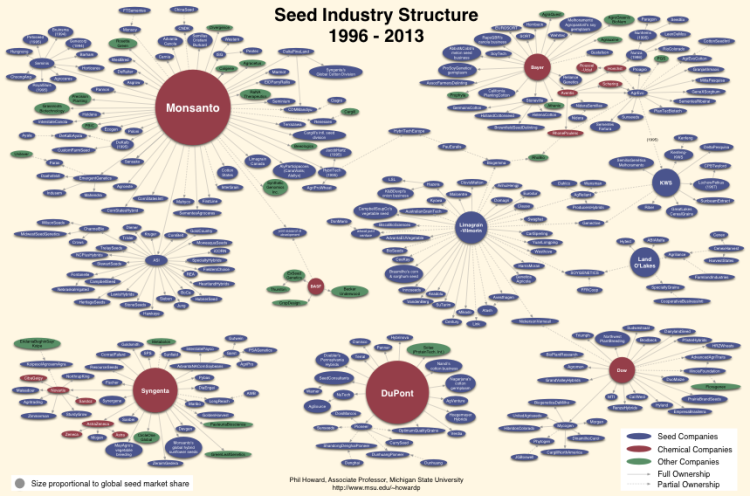the seed we need: there's not enough

Outside right now, in central Massachusetts, it’s 5 degrees Fahrenheit. There’s a thin crust of fresh snow on the ground, and the trees are brown and bare. But in the flood of seed catalogues that have been flowing into the farmhouse mailbox over the past few months, it’s summer. Peas are fat in the pod, the lettuce is in full flush, and eggplants hang heavy, shiny, and purple. All the grass is green. There are flowers everywhere.
It’s into this imagination land of color and warmth that we’ve been burrowing throughout the coldest season as we attempt to tease out a concrete organic crop plan from this fantasy of perfect bounty. But as with any fantasy, there are limitations to this one’s ability to deliver on it’s promise: our land is not perfect land, our soils are not perfect soils, we are not perfect growers, and the weather, inevitably, will not behave perfectly for our purposes.
Even more than the obvious disparities, however, these catalogues are limited in that they bely the true nature of their industry. Abundance, diversity, and choice: this is what we hope to achieve in the crop plan for this farm’s organic vegetable CSA, and that is what the seed catalogues are selling us. But the reality of the seed industry is not that. The reality of the seed industry is this:

Consolidation is the name of the game when it comes to seed, and nothing suppresses abundant diversity and choice like the concentration of research funding and intellectual property rights into the hands of just a few. Despite the existence of a select number of seed companies that cater to the needs of small-scale, diversified, and/or organic farmers, and despite the considerable (and still growing) market for organic seed, the actual supply of attainable organic genetics is quite small. And without sufficient organic seed, the hardiness of organic agriculture starts to look—well, considerably less hardy.
According to the Organic Seed Alliance’s 2016 report, most organic farmers still rely on conventional seed because they can’t find organic versions of the varieties they need [...] The result for farmers is not simply compromised principles and reliance on regulatory exemptions, but a reservoir of organic germplasm whose quality, in addition to scale, is inadequate to their needs.
The reasoning here is partly ideological, partly regulatory, and partly (the biggest part) due to the nature of seed, explains Tyson Neukirch, former head grower at the Farm School. Growing with organic seed means supporting the growth of the organic seed industry—an act of solidarity as well as self-interest. Increased demand ought to lead to increased supply of organic seed, and increased supply enables organic farmers to better comply with organic certifiers who are becoming more stringent with their requirement that organic-certified farmers use organic seed unless, as the USDA National Organic Program puts it, “an equivalent organically produced variety is not commercially available.”
But even under such pressures, much of the organic seed desired by organic growers remains inaccessible. According to the Organic Seed Alliance’s 2016 report, most organic farmers still rely on conventional seed because they can’t find organic versions of the varieties they need, there simply isn’t enough seed of certain organic varieties, and the available organic varieties lack desired traits. The result for farmers is not simply compromised principles and reliance on regulatory exemptions, but a reservoir of organic germplasm whose quality, in addition to scale, is inadequate to their needs.
In response to this supply-demand lag, organic farmers in the Northeast are starting to organize. The NOFA-NY winter conference this year housed within itself an inaugural Northeast Organic Seed Conference, with discussion focusing on building an industry that effectively protects and promotes the biodiversity of organic seed.
When it comes to creating a seed supply that is accessible, responsive, and malleable, availability of open-source and regionally-adapted seed is perhaps even more important than organic qualifications.
These farmers recognize that organic growers using conventional seed are operating at a disadvantage. The purpose of seed breeding is to adapt varieties to specific conditions—whether ecological, cultural, or economic. Organically bred and produced seed is adapted to thrive under the particular conditions of an organic management scheme—conditions similar to those used by the organic farmer who purchases the seed. As a rule (to which there are, of course, exceptions), conventional seed will not be as good at growing under these same conditions, because it hasn’t been bred with those attributes in mind. So long as organic growers are forced to rely on the mismatched technology of conventional seed, it’s unlikely that the full potential of organic practice will be realized.
So far, I’ve limited this discussion to organic seed and organic agriculture, but it’s important to recognize that organic is not the only goal to be striving for when considering the seed infrastructure necessary for a sustainable food system. In my opinion, “organic” serves as a useful though imperfect placeholder for a broader set of agricultural ethics that don’t necessarily have most to do with whether or not somebody ever uses synthetic pesticides. When it comes to creating a seed supply that is accessible, responsive, and malleable, availability of open-source and regionally-adapted seed is perhaps even more important than organic qualifications.
As Alex Vaughn, current head grower for the Farm School points out, patented seeds fail the broader organic ethos in that they lock up important information and plant potential that are most useful when freely available. This is the principle behind the Open Source Seed Initiative, which grants buyers of OSSI-pledged seed the right to use that seed in any way they like in return for the commitment to not “restrict others’ use of these seeds or their derivatives by way of patents or other means.” The hoped-for effect is a cascade of open source seed development, as new varieties arise through tinkering and new users commit to maintaining the accessibility of those genetic lines.
Regional adaptation is a natural by-product of open source seed, in that farmers inclined to grow their own seed will end up adapting varieties to their unique growing conditions. This intentional design is essential to enabling seed to meet the particular needs of particular farmers in particular places providing food to the particular people who will ultimately eat the food grown from those seeds. The usefulness of organic seed—both to farmer and food system— quickly becomes diluted if it lacks this geographic specificity. “Buy local” ought to apply to seed as well, for practical even above philosophical reasons.
That’s not to advocate for an entirely DIY seed industry: not all farmers want to save seed or tweak plant genetics, and that’s appropriate. Not everyone should have to do everything, and the presence of seed-growing experts is a benefit to the food system as a whole. It becomes important, then, insofar as we are able, to support those seed companies that support a seed infrastructure that is truly sustainable—open source, regionally specific, and organic.
Let this be the fantasy that sustains us through the winter.
Sophie Mendelson is a student at the Learn to Farm Program at the Farm School which offers a year-long, work-based, experiential immersion in the practical skills of diversified, sustainable farming. You can follow her, and her fellow student farmers, throughout their year learning to farm on their blog, Field Notes from Maggie’s Farm. Read more of Sophie’s writing on the Greenhorns Blog, Huffington Post and in Modern Farmer.
Now in its 28th year, the Farm School in Athol, MA provides comprehensive educational programming in agriculture for youth, visiting schools, and adults. (Read more on their programming here!) Watch for more original posts on this blog from Sophie Mendelson, a student in their Learn to Farm Program, talented writer, and past and future farmer.

